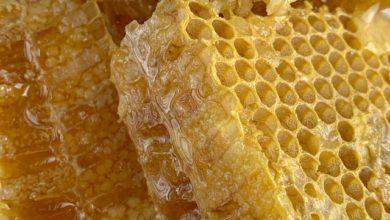Is Honey Acidic or Alkaline

Have you ever wondered about the acidity or alkalinity of honey?
The pH Level of Honey: Unraveling the Acidity Debate
Perhaps you’ve come across conflicting information and found yourself embroiled in a fierce debate about whether honey is acidic or alkaline. In this chapter, we aim to shed light on this popular topic, providing a brief explanation of the debate while emphasizing the importance of understanding the pH level of honey for health and dietary purposes.
Understanding the pH Level of Honey
Figuring out whether honey falls on the acidic or alkaline end of the pH scale is crucial as it aids in comprehending its potential effects on our bodies. The pH scale, ranging from to 14, measures the acidity or alkalinity of substances. A substance with a pH below 7 is considered acidic, while anything above 7 is deemed alkaline. When it comes to honey, the debate originates from its unique composition, which can vary based on several factors.
Exploring the Debate: Is Honey Acidic or Alkaline?
The debate on the acidity or alkalinity of honey stems from the presence of different acids and minerals within its composition. While honey typically has an acidic pH, falling between 3.2 and 4.5 on the scale, its precise level can depend on various factors such as floral source, processing methods, and even geographical location.
Natural Acidity: A Key Component of Honey
Honey owes its natural acidity to the presence of organic acids such as gluconic, formic, and citric acid. The concentration of these acids primarily varies according to the floral nectar source the bees collect. For instance, honey derived from citrus blossoms tends to have higher levels of citric acid, contributing to a pleasantly tangy flavor.
Other Influencing Factors: Processing and Storage
Apart from the organic acids present in honey, its acidity can be influenced by the processing methods involved. Heating and filtering, common practices in honey processing, might alter the natural pH to some extent. Moreover, proper storage is essential to maintain honey’s acidity throughout its shelf life. Exposure to excessive heat or extended storage periods can lead to a gradual increase in pH, potentially shifting it towards the alkaline side.
The Significance of pH Level for Health and Dietary Purposes

Understanding the pH level of honey holds great significance for both our health and dietary choices. While it is important to note that honey is not considered highly acidic, its mild acidity can be beneficial in several ways.
- Gastric Acid Regulation
Due to its mild acidity, honey has been observed to aid in regulating gastric acid levels. Individuals suffering from gastroesophageal reflux disease (GERD) or heartburn might find relief by incorporating honey into their diet. Its acidity acts as a natural buffer, helping to neutralize excessive stomach acid and alleviate discomfort.
- Preservation and Shelf Life
The natural acidity inherent in honey not only provides unique flavors but also assists in preservation and extending its shelf life. The low pH level inhibits the growth of bacteria and other microorganisms, making honey a self-preserving food. This characteristic has allowed honey to maintain its quality and nutritional value for centuries, even in the absence of refrigeration.
Understanding pH Levels
In our quest to comprehend the intricate workings of the natural world, we must familiarize ourselves with the concept of pH levels. This fundamental aspect of chemistry allows us to measure the acidity or alkalinity of various substances, including the sweet nectar of honey.
The pH Scale
The pH scale serves as a vital tool in quantifying the acidic or alkaline properties of a substance. Ranging from to 14, this logarithmic scale categorizes solutions into three primary segments: acidic, neutral, and alkaline. Let’s explore these regions in detail.
1. Acidic: A pH value below 7 indicates the presence of an acidic substance. Substances falling within this range are known for their sour taste and ability to corrode materials. Examples include lemon juice, vinegar, and battery acid.
2. Neutral: At the midpoint of the pH scale lies neutrality, denoted by a pH value of 7. Pure water is a classic example of a neutral substance. Neither acidic nor alkaline, it showcases a harmonious balance of hydrogen ions (H+) and hydroxide ions (OH-).
3. Alkaline: Substances with a pH value above 7 possess alkaline properties. Commonly referred to as basic, alkaline solutions are characterized by their bitter taste and ability to act as electrolytes. Examples include soapy water and baking soda solutions.
Significance of pH Levels
Understanding pH levels holds immense significance in various fields, ranging from scientific research to everyday applications. Let’s examine why pH determination plays a crucial role in unraveling the acidity or alkalinity of substances, including our beloved honey.
- Chemical Reactivity: By knowing the pH level of a substance, scientists can ascertain its chemical properties and predict its behavior in reactions. Acidic substances tend to be highly reactive, often leading to corrosion or decomposition. Conversely, alkaline solutions can exhibit properties such as soapiness or increased viscosity.
- Biological Impacts: pH levels are vital for numerous biological systems. For instance, our skin has a slightly acidic pH, acting as a protective barrier against harmful microorganisms. Additionally, the pH levels within our bodies play a critical role in maintaining homeostasis, ensuring that various physiological processes function optimally.
- Honey and pH: Understanding the pH of honey is of particular interest to beekeepers, honey enthusiasts, and researchers alike. Honey is generally acidic, with pH levels ranging between 3.2 and 4.5. This low pH gives honey its characteristic tangy flavor, acts as a natural preservative, and inhibits the growth of bacteria and other microorganisms.
The Composition of Honey
Honey, nature’s golden elixir, is not only a delight to the taste buds but also a treasure trove of natural constituents that contribute to its unique properties and numerous health benefits.
Overview of honey’s natural constituents:
Honey is a complex substance, comprising various components that contribute to its nutritional and therapeutic value.
Here are the key constituents of honey:
- Sugars: The primary constituent of honey is carbohydrates, which predominantly exist as simple sugars such as fructose and glucose. These natural sugars not only give honey its sweet taste but also provide it with its energizing properties.
- Enzymes: Honey contains a range of enzymes that are a result of the bees’ own secretions and the natural enzymes present in the flower nectar collected by bees. Enzymes play a crucial role in honey’s antimicrobial properties and contribute to its rich enzymatic activity.
- Water: While honey is often referred to as a dense and viscous liquid, it actually contains significant amounts of water. Typically, honey contains around 17-20% water, but this level can vary depending on factors such as floral source, processing methods, and storage conditions.
- Minerals: Honey is a source of several essential minerals crucial for maintaining good health. Calcium, potassium, magnesium, phosphorus, and trace elements like iron, zinc, copper, and selenium are commonly found in honey, albeit in varying amounts, depending on the floral source.
- Acids: Acids, both organic and inorganic, are among the natural constituents of honey that contribute to its distinct flavor and preservation. The main organic acids found in honey include gluconic acid and citric acid, although other acids may be present in smaller quantities. These acids give honey its characteristic tang, playing an important role in defining its flavor profile.
Main acids commonly found in honey:
- Gluconic Acid:
Gluconic acid is one of the primary organic acids present in honey, resulting from the conversion of glucose by the enzyme glucose oxidase. This acid contributes to honey’s low pH, creating an unfavorable environment for bacteria and potential pathogens.
Moreover, gluconic acid is believed to have antioxidant properties, enhancing the overall health benefits of honey.
- Citric Acid:
Citric acid, another organic acid found in honey, is a natural component that contributes to its pleasant taste and aroma. Derived from the floral nectar, citric acid adds a refreshing tartness to honey while also acting as a natural preservative.
Furthermore, citric acid has also been associated with potential health benefits, including its role as an antioxidant and its contribution to digestive health.
Measuring the pH of Honey
Here are the various methods used to measure the pH level of substances and delve into the specific technique employed to measure the pH of honey samples.
Methods for Measuring pH:
Litmus Paper Test:
- Litmus paper is a simple and affordable method for measuring pH.
- Red litmus paper turns blue in the presence of alkaline (basic) substances, while blue litmus paper turns red in the presence of acidic substances.
- The color change observed on the litmus paper is then compared to a pH chart to determine the pH level of the substance being tested.
pH Indicator Solutions:
- pH indicator solutions are chemical dyes that change color depending on the pH level of a substance.
- Phenolphthalein solution, for example, turns pink in the presence of a base and remains colorless in the presence of an acid.
- By adding a few drops of the indicator solution to a sample, one can observe the color change and determine the pH level.
pH Meters:
- pH meters are electronic devices specifically designed to measure the acidity or alkalinity of a substance.
- They consist of a probe, which is dipped into the sample, and a digital display that shows the pH reading.
- pH meters provide precise and accurate measurements, making them ideal for scientific analysis.
Measuring the pH of Honey Samples:
Honey, being a natural product of bees, can have varying pH levels depending on factors such as the nectar source and processing methods. To measure the pH of honey samples, a pH meter is commonly used due to its accuracy and efficiency.
Procedure:
1. Calibration: Before taking any measurements, it is crucial to calibrate the pH meter using buffer solutions of known pH levels. This ensures the accuracy of subsequent readings.
2. Sample Preparation: A representative honey sample is obtained and gently mixed to ensure homogeneity and eliminate any potential hotspots.
3. pH Measurement: The pH meter probe is carefully immersed into the honey sample without touching the sides or bottom of the container. It is crucial to allow sufficient time for the pH reading to stabilize on the device’s display.
4. Recording Results: Once the pH reading stabilizes, the value is noted down alongside any relevant information, such as the honey’s origin, date of collection, or processing method.
Acidic Properties of Honey
Here are some of the acidic properties of honey, exploring their role in the taste and preservation of this golden elixir. Additionally, we will discuss the potential health benefits that arise from consuming honey with acidic properties.
One of the fascinating aspects of honey is its diverse composition, which includes a wide range of organic acids. These naturally occurring acids contribute to the distinct flavors found in different types of honey. Some of the commonly identified acids in honey include gluconic acid, malic acid, citric acid, and acetic acid.
The presence of acids in honey not only lends it a delightful tang but also plays a crucial role in the preservation of this natural delicacy. The acidic pH of honey inhibits the growth of microorganisms, making it highly resistant to spoilage. The acidity acts as a natural preservative, allowing honey to have an incredibly long shelf life.
Discussion on potential health benefits:
Beyond its delightful taste and preservative properties, honey with acidic properties offers a variety of potential health benefits. Let us explore some of these benefits:
- Digestive Health: The acidic nature of honey can aid in digestion by stimulating the production of digestive enzymes, promoting optimal digestive function. It can provide relief from indigestion, bloating, and acid reflux when consumed in moderation.
- Nutrient Absorption: The acids present in honey may enhance the absorption of vital minerals such as calcium, magnesium, and iron from other foods. By improving nutrient absorption, honey contributes to overall health and well-being.
- Antioxidant Power: Some of the organic acids found in honey possess antioxidant properties. These antioxidants help combat harmful free radicals in the body, reducing the risk of chronic diseases, including heart disease and certain types of cancer.
- Immune Boosting: The acidic properties of honey can support immune function. It may help in fighting infections, soothing a sore throat, and relieving cough symptoms. Regular intake of honey with acidic properties can strengthen the immune system and promote general well-being.
Alkaline Properties of Honey
In this section, we delve into the intriguing alkaline properties of honey. We will investigate the presence of important alkaline minerals in honey, such as calcium, potassium, and magnesium.
Additionally, we will examine the potential impact of these minerals on the overall pH balance of our bodies. By understanding the alkaline nature of honey, we can unlock its benefits for our well-being.
The Alkaline Minerals in Honey:
Honey is not just a sweet and delicious treat; it also contains an array of beneficial minerals. Among these minerals, calcium, potassium, and magnesium play a significant role in maintaining alkalinity in our bodies. These minerals are essential for various bodily functions, and their presence in honey adds to its nutritional value.
- Calcium:
Calcium, well-known for promoting healthy bones and teeth, is also an alkaline mineral found in honey. Adequate calcium intake helps our muscles, nerves, and heart function optimally. When combined with other alkaline minerals in honey, calcium contributes to maintaining a balanced pH level in our bodies.
- Potassium:
Potassium, another vital alkaline mineral present in honey, acts as an electrolyte and aids in maintaining proper fluid balance. It supports nerve transmission, muscle contractions, and heart function. The inclusion of potassium in honey contributes to its alkaline nature, which can have positive effects on our overall pH balance.
- Magnesium:
Magnesium is a powerhouse mineral essential for various biochemical reactions in our bodies. It plays a crucial role in energy production, muscle function, and maintaining heart health. With its alkaline properties, magnesium found in honey supports the neutralization of acid, thereby contributing to a healthy pH level.
The Impact on Body pH Balance
Maintaining the pH balance of our bodies is of utmost importance for overall health and well-being. Our bodies strive to maintain a slightly alkaline pH, typically around 7.4, to support optimal functioning of cells and bodily systems.
Unfortunately, many modern diets are excessive in acidic foods, such as processed sugars, caffeine, and animal products, which can disrupt our pH balance.
Here, honey comes to the rescue with its alkaline properties. The presence of calcium, potassium, and magnesium in honey helps neutralize acidity and promote a more balanced pH in our bodies. By including honey in our diets, we can support our body’s natural defense mechanisms against acidification, ultimately enhancing our overall health.
The Truth about Honey’s pH
Here is some information regarding the truth about honey’s pH and explore why categorizing it as either acidic or alkaline is not as straightforward as it may seem.
- Variations in Honey’s pH:
It is important to note that honey’s pH can vary depending on several factors, including its botanical source, processing methods, and storage conditions. Different types of honey, such as those derived from flowers, trees, or even specific regions, can have varying pH levels. This unique characteristic is a result of the diverse range of organic acids present in honey, including gluconic, acetic, formic, and citric acids, among others.
- The Influence of Botanical Source:
The botanical source plays a significant role in determining honey’s pH. Bees collect nectar from various flowers, and the composition of these nectars greatly affects the pH of the resulting honey. For instance, honey derived from citrus blossoms tends to have a lower pH, typically ranging from 3. to 4.5, making it more acidic. In contrast, honey produced from alfalfa or clover may have a higher pH, ranging from 6. to 7., making it slightly alkaline.
- Processing and Storage Conditions:
Apart from the botanical source, the processing methods used to extract honey can also introduce variations in its pH. Heating and filtering techniques aimed at improving its clarity and shelf life may slightly alter the pH levels. Additionally, storage conditions, such as temperature and exposure to light or air, can gradually impact the pH of honey over time. This emphasizes the need for proper storage to maintain honey’s quality and composition.
The Complexity of Categorization:

Due to the multitude of influencing factors, categorizing honey as strictly acidic or alkaline can be challenging. While some sources may refer to honey as acidic due to its low pH, it is essential to recognize the variations within different types of honey. Additionally, honey’s pH can change throughout its lifespan, making categorization even more intricate.
The Importance of pH:
Although classifying honey’s pH may be complex, its impact on human health remains limited. The human body has a remarkable ability to maintain its internal pH balance, regardless of the food or beverages consumed. Honey, when consumed in moderate amounts, can contribute to overall well-being, irrespective of its pH level.
Conclusion
We have delved into the debate surrounding the acidity of honey, highlighting its slightly acidic nature while acknowledging variations in pH due to factors like floral sources, processing, and storage.
Understanding the pH level of honey is essential for comprehending its potential effects on our health and dietary choices. Honey’s mild acidity offers benefits such as aiding in gastric acid regulation and preserving its quality for prolonged periods.
Frequently Asked Questions – Is Honey Acidic or Alkaline?
What is the pH level of honey?
- Honey is typically acidic, with a pH ranging from 3.2 to 4.5. This slightly acidic nature helps prevent the growth of bacteria and microorganisms, contributing to honey’s long shelf life.
Can the acidity of honey vary?
- Yes, the acidity of honey can vary depending on the floral source and other factors such as soil composition and climate. Different types of honey may have slightly different pH levels.
Is honey considered an acidic food?
- Although honey is naturally acidic, when consumed, it has an alkaline effect on the body. While it may initially taste acidic, during the digestion process, honey produces alkaline byproducts, which can help balance the body’s pH levels.
Is acidic honey safe to consume?
- Yes, acidic honey is safe to consume. In fact, its acidity plays a crucial role in inhibiting the growth of harmful bacteria and preventing spoilage. However, individuals with specific health conditions, such as acid reflux or stomach ulcers, should consult their healthcare provider before consuming large quantities of acidic foods.
How does the acidic nature of honey benefit beekeeping?
- The natural acidity of honey helps to preserve it, ensuring it remains stable over time. This is particularly advantageous for beekeepers, as it allows them to store and distribute their honey without concerns about spoilage.
Can the pH level of honey influence its taste?
- Yes, the pH level can contribute to the taste of honey. Low pH levels often result in a tangy or sour taste, while higher pH levels can offer a milder, sweeter flavor. However, the taste of honey is also influenced by its floral source and other factors.
Are there any health benefits associated with the acidity of honey?
- The acidity of honey, combined with its natural antimicrobial properties, can promote digestive health and support the immune system. Additionally, the alkaline byproducts generated during digestion can help maintain the body’s overall pH balance.
How can I determine the pH level of honey at home?
- Determining the pH level of honey typically requires specialized equipment such as a pH meter or test strips. It is advisable to consult a laboratory or professional beekeeping association for accurate measurements.
Does different floral source honey have varying acidity levels?
- Yes, different floral sources of honey may have varying acidity levels. Honey derived from specific plants or flowers can exhibit unique pH properties, resulting in subtle variations in taste, aroma, and potential health benefits.
Can the pH level of honey affect its quality or medicinal properties?
- While pH level is an important factor in preserving honey’s shelf life, it’s not the sole determining factor of quality or medicinal properties. Factors like floral source, processing methods, and storage conditions can significantly impact honey’s overall quality and potential health benefits.




